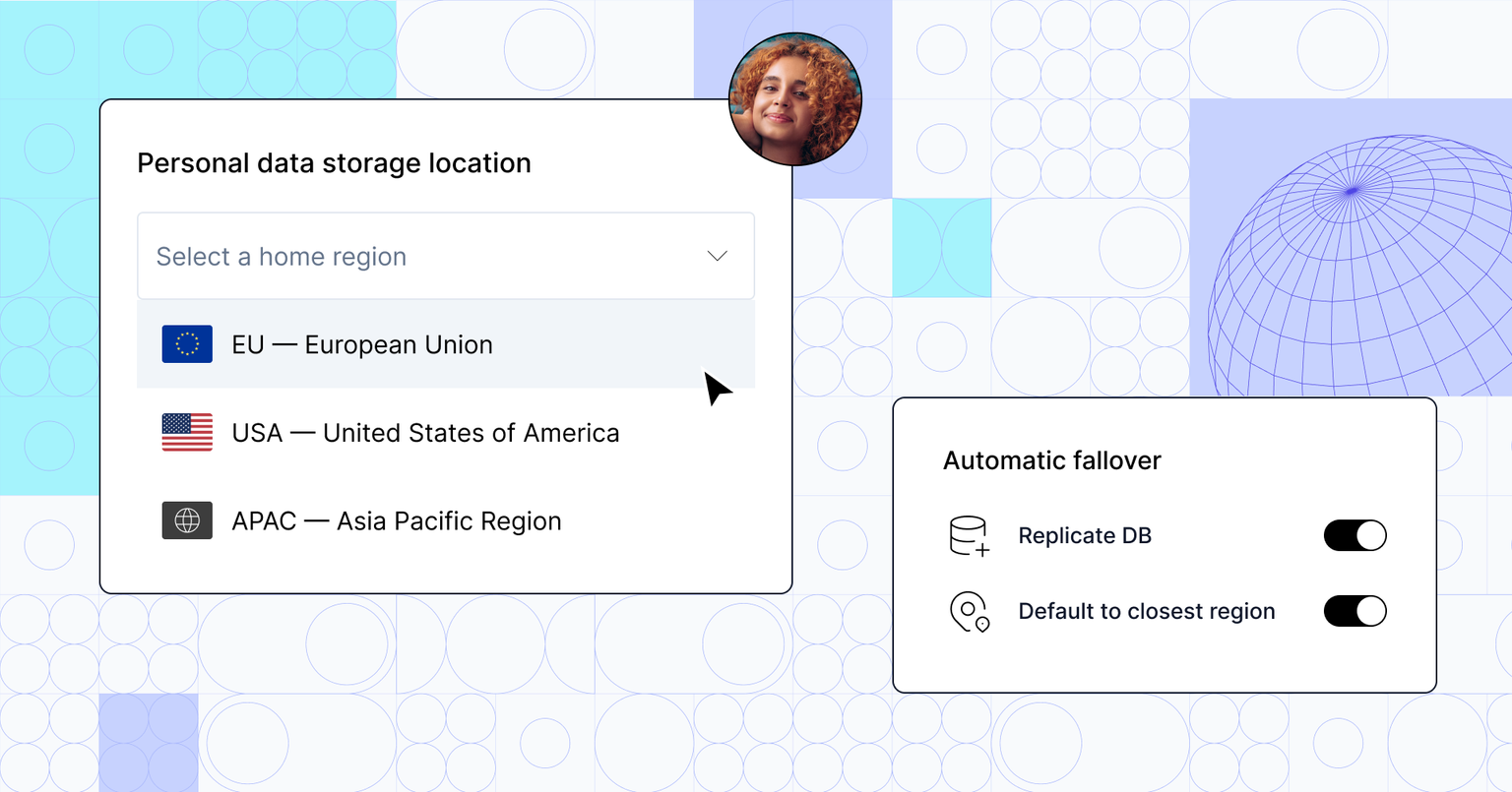Deploy Ory Kratos with Knative and Kubernetes in Minikube
Run Ory Kratos as a serverless service on Kubernetes and Knative with scale-to-zero deployments.

Ory Guest
Serverless computing is a hot topic these days, and so is vendor lock in. Knative looks like something that addresses both points: You can have the cake and eat it too. For sure, there is always some downsides and that should be discussed elsewhere. For now, let's simply assume you're interested in Ory's cloud native software applications for security and identity management. And you want to run it on Knative. In order to examine that it's best to have Knative running on your computer.
Prerequisites
Kubernetes and Minikube are high performance resource intensive applications. As a minimum requirement, we suggest 16GB of RAM. This example was developed on UbuntuLinux/minikube/kvm2 and it should definitely work with other setups.
We will need Helm. Please download the helm-binary in a local .bin directory for later usage.
$ mkdir -p .bin
$ HELM_INSTALL_DIR=./.bin bash <(curl -s https://raw.githubusercontent.com/helm/helm/master/scripts/get-helm-3) --no-sudo --version v3.1.2
minikube
Minikube is where it starts. We'll need at least 8GB of RAM for this.
$ minikube delete -p ory-knative
$ echo "Waiting for minikube delete..."
$ sleep 15
$ minikube start -p ory-knative \
--memory=8192 --cpus=6 \
--kubernetes-version=v1.15.0 \
--vm-driver=$VM_DRIVER \
--disk-size=30g \
--extra-config=apiserver.enable-admission-plugins="LimitRanger,NamespaceExists,NamespaceLifecycle,ResourceQuota,ServiceAccount,DefaultStorageClass,MutatingAdmissionWebhook"
$ kubectl config use-context ory-knative
It will probably take some time and you'll have a fully running kubernetes
available afterwards. The last command will also make this cluster available to
your kubectl-command by default. Let's test it with some commands, e.g.
kubectl cluster-info We want to have the kubernetes dashboard available as
well. Also, a cluster does not make much sense if you can't access it via a
Loadbalancer. In Minikube, there is a built-in tool that simulates a
LoadBalancer: tunnel. However, the tunnel command is not coming back but
will continue to run in the foreground. For that reason open a second shell
terminal session. make mikikube-access
$ minikube -p ory-knative dashboard
$ minikube -p ory-knative tunnel
Istio and Knative
We'll install Istio version 1.3.6. That is the one
recommended in the
knative-installation-documentation.
This takes about 30 seconds. make istio-init
$ ISTIO_VERSION=1.3.6 .bin/getLatestIstio
$ cd istio-1.3.6
$ for i in install/kubernetes/helm/istio-init/files/crd*yaml; do kubectl apply -f ${i}; done
$ kubectl create namespace istio-system
$ kubectl label namespace istio-system istio-injection=disabled
$ cd istio-1.3.6
$ ../.bin/helm template --namespace=istio-system \
--set prometheus.enabled=false \
--set mixer.enabled=false \
--set mixer.policy.enabled=false \
--set mixer.telemetry.enabled=false \
`# Pilot doesn't need a sidecar.` \
--set pilot.sidecar=false \
--set pilot.resources.requests.memory=128Mi \
`# Disable galley (and things requiring galley).` \
--set galley.enabled=false \
--set global.useMCP=false \
`# Disable security / policy.` \
--set security.enabled=false \
--set global.disablePolicyChecks=true \
`# Disable sidecar injection.` \
--set sidecarInjectorWebhook.enabled=false \
--set global.proxy.autoInject=disabled \
--set global.omitSidecarInjectorConfigMap=true \
--set gateways.istio-ingressgateway.autoscaleMin=1 \
--set gateways.istio-ingressgateway.autoscaleMax=2 \
`# Set pilot trace sampling to 100%` \
--set pilot.traceSampling=100 \
--set global.mtls.auto=false \
install/kubernetes/helm/istio \
> ./istio-lean.yaml
$ kubectl apply -f istio-${ISTIO_VERSION}/istio-lean.yaml
$ echo "Let's wait on the pods coming up in istio-system"
$ while [[ "$(kubectl get pods --field-selector=status.phase!=Running -n istio-system -o json | jq '.items[].metadata.name' | wc -l )" != 0 ]]; do echo "waiting another 5 secs of approx 30 secs..."; sleep 5; done
$ cd ..
The knative-installation takes 4 minutes approximately. It's effectively simply applying yaml-files directly from Github:
$ kubectl apply --selector knative.dev/crd-install=true \
--filename https://github.com/knative/serving/releases/download/v0.12.0/serving.yaml \
--filename https://github.com/knative/eventing/releases/download/v0.12.0/eventing.yaml \
--filename https://github.com/knative/serving/releases/download/v0.12.0/monitoring.yaml || true
$ kubectl apply --filename https://github.com/knative/serving/releases/download/v0.12.0/serving.yaml \
--filename https://github.com/knative/eventing/releases/download/v0.12.0/eventing.yaml \
--filename https://github.com/knative/serving/releases/download/v0.12.0/monitoring.yaml
You can check whether the installation is finished by listing resources that are not yet in "RUNNING" state in each of the 3 knative specific namespaces:
$ kubectl get pods --field-selector=status.phase!=Running -n -o jsonpath='{.items[*].metadata.name}' -n knative-serving | tr -s '[[:space:]]' '\n'
$ kubectl get pods --field-selector=status.phase!=Running -n -o jsonpath='{.items[*].metadata.name}' -n knative-eventing | tr -s '[[:space:]]' '\n'
$ kubectl get pods --field-selector=status.phase!=Running -n -o jsonpath='{.items[*].metadata.name}' -n knative-eventing | tr -s '[[:space:]]' '\n'
$ knative-serving -o json | jq '.items[].metadata.name' | wc -l )" != 0 ]]
Deploy an Go-container example and the Ory Oathkeeper demo
The Knative documentation has a very simplistic hello world example, which we'll use here as a kind of probe to test the functionality. It's a very simple go-container running a webserver returning "Hello Go Sample v1!".
$ kubectl apply --filename probe-helloworld.yaml
$ ./modify_etchosts.sh $(kubectl get route helloworld-go --output jsonpath="{.status.url}" | cut -d"/" -f3)
$ printf "\n\n --> Access the probe at $(kubectl get route helloworld-go --output jsonpath='{.status.url}')"
The code above will also modify your /etc/hosts file in order to make the DNS-name resolvable: http://helloworld-go.default.example.com.
So if the example is not working properly by returning "Hello Go Sample v1!",
please check your hostfile. The above DNS-name needs to resolve to the
IP-address that you get by running
kubectl get svc istio-ingressgateway -n istio-system --output jsonpath="{.status.loadBalancer.ingress[0].ip}".
That's especially important if you've purged and recreated the cluster. Also
make sure that the tunnel process, mentioned above, is up and running.
The next step is to deploy a very basic oathkeeper-demo.
$ kubectl create ns demo || true
$ helm template --name-template=demo --namespace=demo \
--set 'demo=true' \
--set maester.enabled=false \
--set service.enabled=false \
--set service.api.enabled=false \
--set service.proxy.enabled=false \
--set global.ory.oathkeeper.maester.mode=this_prevents_rendering_the_deployment \
ory/oathkeeper > oathkeeper_config.yaml
$ kubectl apply -f oathkeeper_config.yaml
# the other file is handcrafted by merging the deployment-spec with the ksvc-spec
$ kubectl apply -f oathkeeper_ksvc.yaml
# see Readme.md for issues which came up with that approach
$ sleep 15
$ ./modify_etchosts.sh $(kubectl get route demo-oathkeeper -n demo --output jsonpath="{.status.url}" | cut -d"/" -f3)
$ printf "\n\n --> Access the demo at $(kubectl get route demo-oathkeeper -n demo --output jsonpath='{.status.url}')/authenticator/anonymous/authorizer/allow/mutator/id_token "
The trick here is to use some Helm variables in a way that suppress the creation of deployment- and pod-yaml-files. After that, we can apply the config map and the secret without any modifications. The ksvc-yaml script needs to be handcrafted, though. While its creation was quite simple and straightforward, the file can also be reviewed in Github:
- Create a stub by copying the above helloworld-example and adjust the name, label and other meta-values
- Copy the spec from the created deployment part of the oathkeeper-helm-charts and replace the spec of our newly created file
- Remove the liveness- and readyness-probe-sections (commented in our case)
- Remove the admin-part port-section. A ksvc may only have one port exposed. We will need to duplicate the ksvc in order to also expose Oathkeeper's admin-port (attention: security-risk!)
- Replace the name of the exposed port as "http1"
So applying that yaml-file should make the service available and you can test it via http://demo-oathkeeper.demo.example.com/authenticator/anonymous/authorizer/allow/mutator/id_token. That's not very useful, but we have to continue as we're only doing a very shallow example here on Knative and Ory software.
Working on Ory Kratos
The goal of this part was to make as much workable as possible from the Ory Kratos quickstart tutorial. We won't get that far, but more about that later. But first another prerequisite: Running Ory Kratos requires an open source relational database system such as Postgres or something equivalent. Without fulfilling that, kratos-bootup will quickly fail.
$ helm repo add bitnami https://charts.bitnami.com/bitnami
$ helm install kratos-psql bitnami/postgresql
This will also give you a hint on how to obtain the password:
kubectl get secret --namespace default kratos-psql-postgresql -o jsonpath="{.data.postgresql-password}" | base64 --decode
As the whole database-connection-string is specified as dsn in the values.yaml file, you have to replace the PASSWORD in that file in line 28.
Ok, guess we're ready to deploy Ory Kratos.
$ kubectl create ns kratos-demo || true
$ helm template --name-template=kratos-demo --namespace=kratos-demo \
--set kratos.config.secrets.session=someSecretNeeds16 \
-f values.yaml \
ory/kratos | .bin/helm-fan-out.sh kratos-helm
$ kubectl apply -f ./kratos-helm/kratos/templates/secrets.yaml
$ kubectl apply -f ./kratos-helm/kratos/templates/configmap-config.yaml
$ kubectl apply -f kratos_ksvc_public.yaml
Other than on the oathkeeper-charts, we were not able to suppress the creation of the deployment/pod. So we needed to "post-process" the created file in order to split the different components in individual files. That's what the "helm-fan-out.sh" script is doing (thanks to washtubs on this issue).
After that, we're selectively only applying the configmap and the secret. The ksvc-yaml is handcrafted again. In that case, we took most of that from investigating the quickstart.yml. The values.yaml stuff (kratos.config) is coming from the quickstart .kratos.yml. Most of these values are not yet adapted though. So we can expect that things don't work, but let's check.
$ kubectl get ksvc kratos -n kratos-demo
$ curl http://kratos.kratos-demo.example.com
$ kubectl describe ksvc kratos -n kratos-demo
$ kubectl describe configuration kratos -n kratos-demo
the first two commands make sure that the pod is created. Remember, it's Knative, and it does that on request. The third command verifies that the configuration was successfully created:
Events:
Type Reason Age From Message
---- ------ ---- ---- -------
Normal Created 6m25s service-controller Created Configuration "kratos"
And the last command is looking at the error messages in the logs that are copied to the Status. Conditions of the configuration-object for our convenience:
Status:
Conditions:
Last Transition Time: 2020-05-27T15:24:34Z
Message: Revision "kratos-gln24" failed with message: Container failed with: time="2020-05-27T15:23:53Z" level=info msg="Config file loaded successfully." path=/etc/config/config.yaml
time="2020-05-27T15:23:53Z" level=fatal msg="The configuration is invalid and could not be loaded." config_key[1]=urls validation_error[1]="validation failed"
So the fatal-message tells us that something with these configuration-lines (values.yaml) is wrong:
urls:
login_ui: http://127.0.0.1:4455/auth/login
registration_ui: http://127.0.0.1:4455/auth/registration
error_ui: http://127.0.0.1:4455/error
settings_ui: http://127.0.0.1:4455/settings
verify_ui: http://127.0.0.1:4455/verify
We shouldn't be surprised! So we need the selfservice_node-application somewhere and we created a very basic ksvc-file for that in the Github-repo. But here are the main two issues we'd need to solve going forward:
- Ory Kratos and the application need to share the same DNS-name in order to be able to communicate with cookies. That's not how things are working out-of-the-box in Knative where each service gets its own DNS-name.
- The admin-port, which we haven't have deployed yet, needs to be protected somehow.
And that's the point where this small article ends. For now, we won't continue going down that path even though we assume that the first problem might be solvable by creating a custom ingress gateway or maybe even less invasive (knative-ingress, -ingress-spec).
Thanks for reading, hopefully it can help you in some way.
Further reading

The Perils of Caching Keys in IAM: A Security Nightmare

Caching authentication keys can jeopardize your IAM security, creating stale permissions, replay attacks, and race conditions. Learn best practices for secure, real-time access control.

Personal Data Storage with Ory Network

Learn how Ory solves data homing and data locality in a multi-region IAM network.